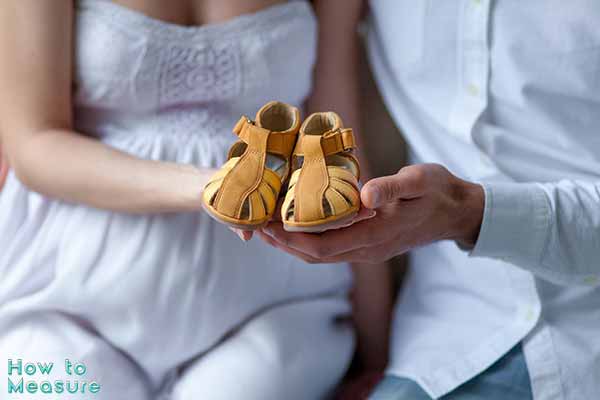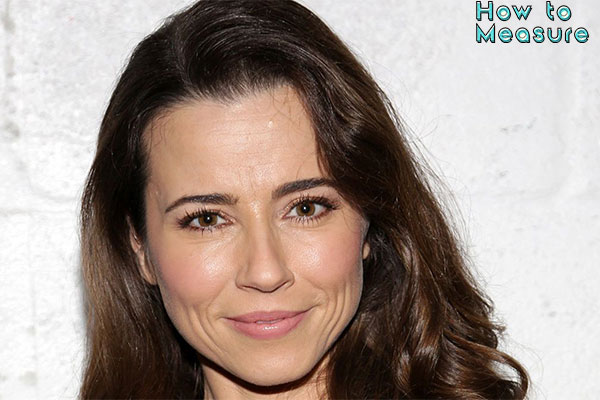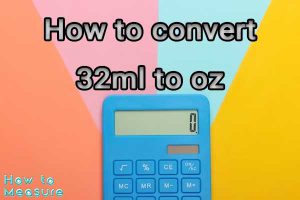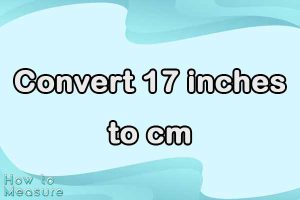How to Measure Baby’s Feet at Home
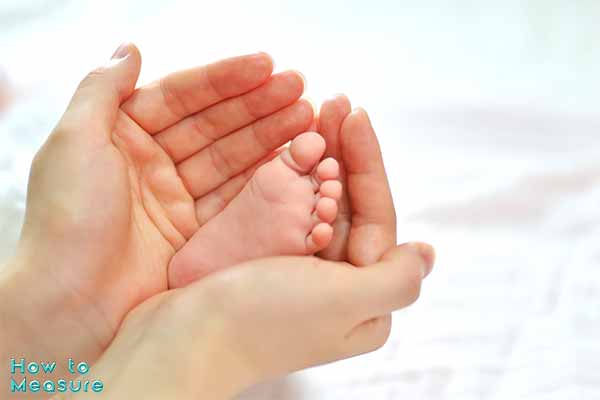
It is ideal to know how many centimeters your baby’s foot measures when you’re buying shoes for them. Although you can orient yourself by the footwear the baby is wearing at that moment, each manufacturer sizes differently, which means not all shoes fit the same. So, here we will explain how to correctly measure your children’s feet:
- To correctly measure the length of your baby’s feet, the first step is to place a white A4 sheet of paper on the floor and glue it to the wall.
- Then you have to place your baby’s feet on the sheet, with the heel against the wall, and, above all, make sure that the sole is completely straight and flat. In this way you will obtain the correct result, or else, the result will not be exact and therefore it will not help at all.
- Finally, you must make a mark where the longest finger ends, and with a meter, measure the distance between the end of the paper and the mark you have made. As a result, you will have a measurement in cm that will correspond to the length of your baby’s feet. This measurement in cm will be the one you will take into account when choosing what shoe size your baby needs.
One factor to take into account is the type of footwear that is going to be bought since a sandal is not the same as a boot. The use of socks and tights or the dilation of the foot due to the heat in summer should also be taken into account when choosing the correct size. Therefore, you must add between 3mm and 4mm to the measurement you have obtained, depending on the type of shoe that you plan to buy.
How to Buy Shoes in a Physical Store without Your Baby
There are times when we go to the shoe store to buy some shoes for our babies but without the child’s foot or without being able to try on the shoes, it becomes much more difficult to get them right. To avoid this common problem, we give you a very simple solution below:
- The first step is to put your baby’s feet on a piece of white paper.
- Next, with a pencil outline each one to later cut them out, so it is convenient to leave a small space between the feet.
- With the outline already cut out, choose the one of the two that is a little larger and go to the store. In this way, you can put the “mold” inside the shoe and thus you will choose the correct size.
The Importance of Choosing the Correct Shoe Size for Your Baby
In addition to the length of the foot, the width must be taken into account. Each child or baby has a different foot shape: some are wide, chubby, narrow, or with a high instep. And although it may seem silly, the closure of the shoe has a great influence in these cases. That is why velcro, lace, and buckle closures are recommended, as they are the most adjustable regardless of the type of foot.
The new shoe must be bought with a margin of about half a centimeter in length since it will not be too tight or too big for the baby. This way you will have a few months of margin until the next size change, which as they grow, will not be so often.
Consequences of Wearing Shoes with the Wrong Size
Shoes that are too tight or small should not be chosen, as this prevents the fingers from being stretched out, causing pain in the instep and poor foot development. They should also feel very comfortable and be able to move their feet easily, especially in the baby stage.
Nor should you choose larger ones so that they last longer. Shoes that are too loose will come out constantly, which will cause chafing and injuries. In addition, your baby’s foot will not be attached, so they can trip or fall.
Baby Footwear Size Guide
Below we leave you a guide of approximate foot and shoe sizes according to the size of your baby’s feet. They are indicative, so they do not have to be exact for all babies:
| Age | Foot Length | EU | UK | USA |
| From 1 to 3 months | 9.5 cm | 16 | 0.5 | 1 |
| From 3 to 6 months | 10.5 cm | 17 | 1.5 | 2 |
| From 6 to 9 months | 11 cm | 18 | 2 | 2.5 |
| From 9 to 12 months | 11.5 cm | 19 | 3 | 3.5 |
| From 12 to 15 months | 12.3 cm | 20 | 3.5 | 4.5 |
| From 15 to 21 months | 13 – 13.7 cm | 21 – 22 | 4.5 – 5.5 | 5 – 6 |
| From 21 to 24 months | 14.3 – 14.9 cm | 23 – 24 | 6 – 7 | 6.5 -7.5 |
How to Make Sure You Have the Right Shoe Size
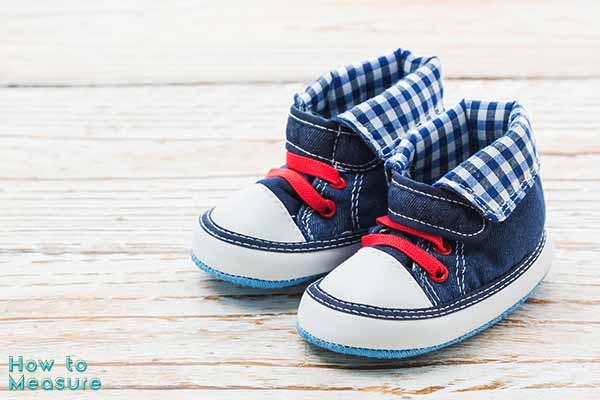
In the case of having made the purchase online, once you have the shoe at home, have your baby try it on with the sock that they are going to wear, or in the case of a sandal, it will be barefoot. With the shoe unbuttoned and putting the foot forward as far as possible until touching the toe of the shoe with the finger, make sure that from behind there will have to be enough space left over for approximately one finger to enter.
Once the baby stands up and the shoe is fastened, the foot will be supported and with enough margin to be comfortable until the next size change. You must bear in mind that, for example, cotton shoes tend to shrink when washed, so they will need a little more margin.
Finally, and before leaving you with this useful size guide, we give you one last piece of advice: if the shoe is going to be worn without a sock, moisturize the skin of the shoe with hand cream, especially in the buttress area. This way the skin softens and you will avoid chafing.
With this article of how to measure, now you can measure your baby’s shoe size right at home! 🙂

